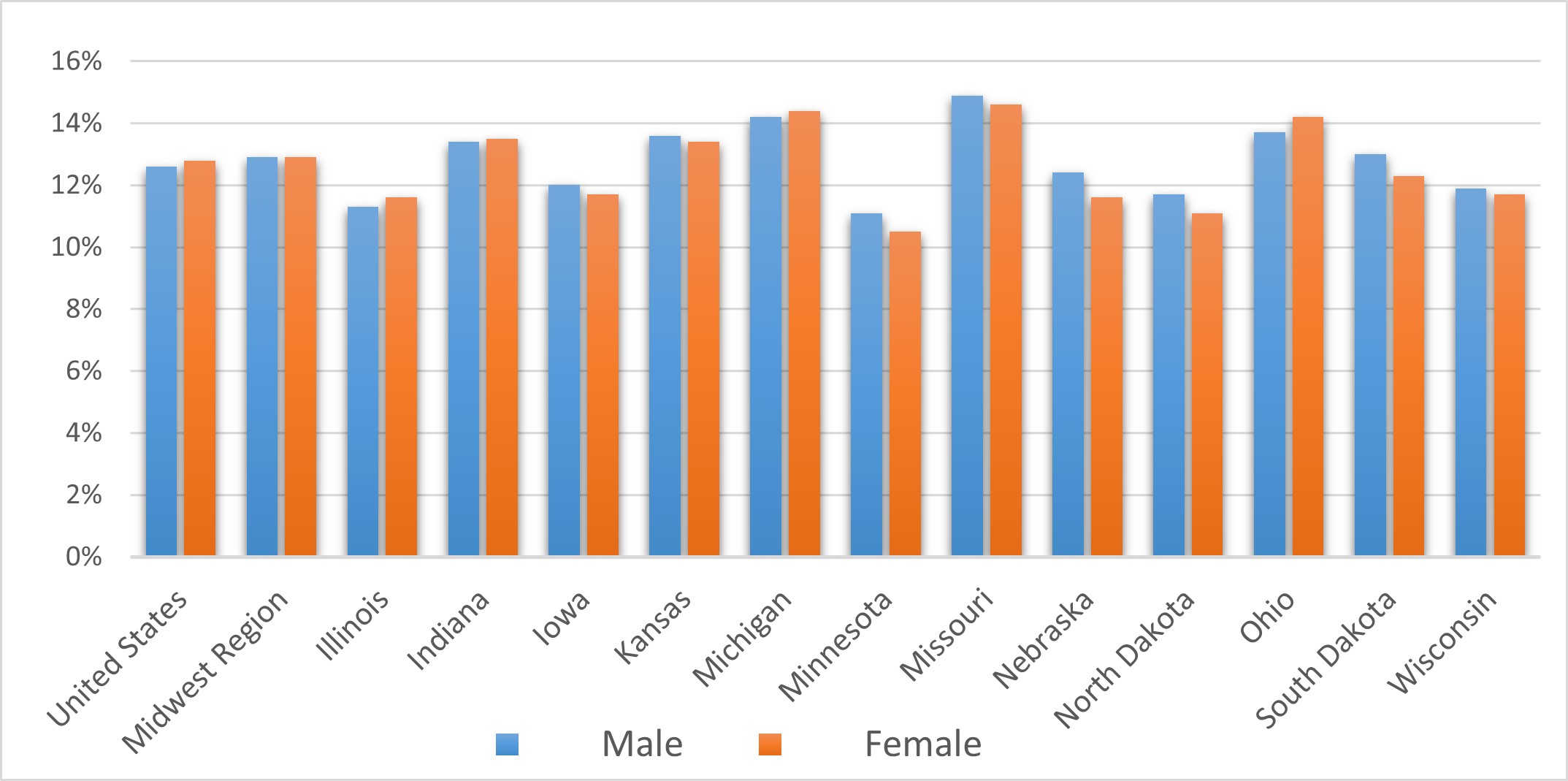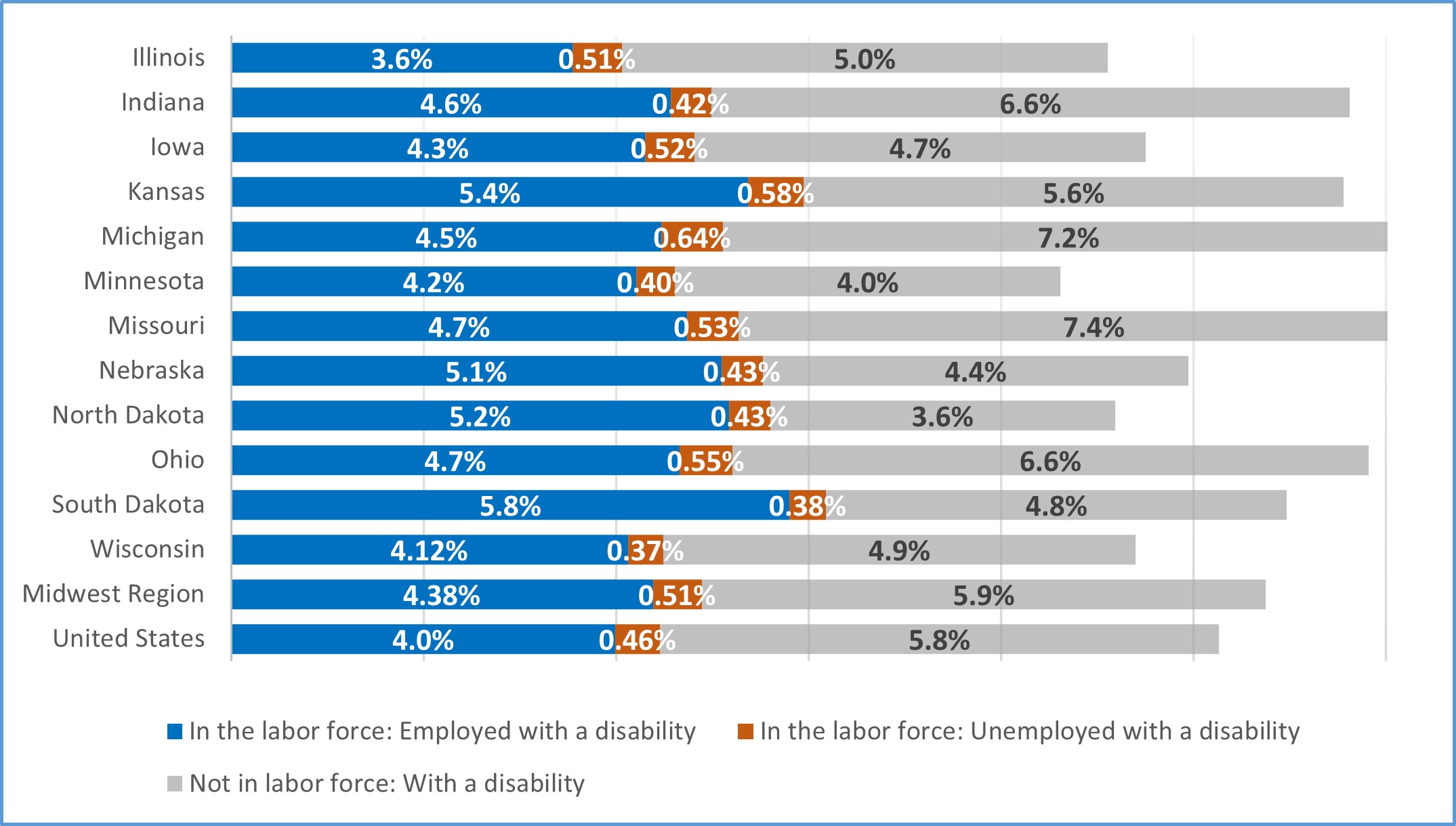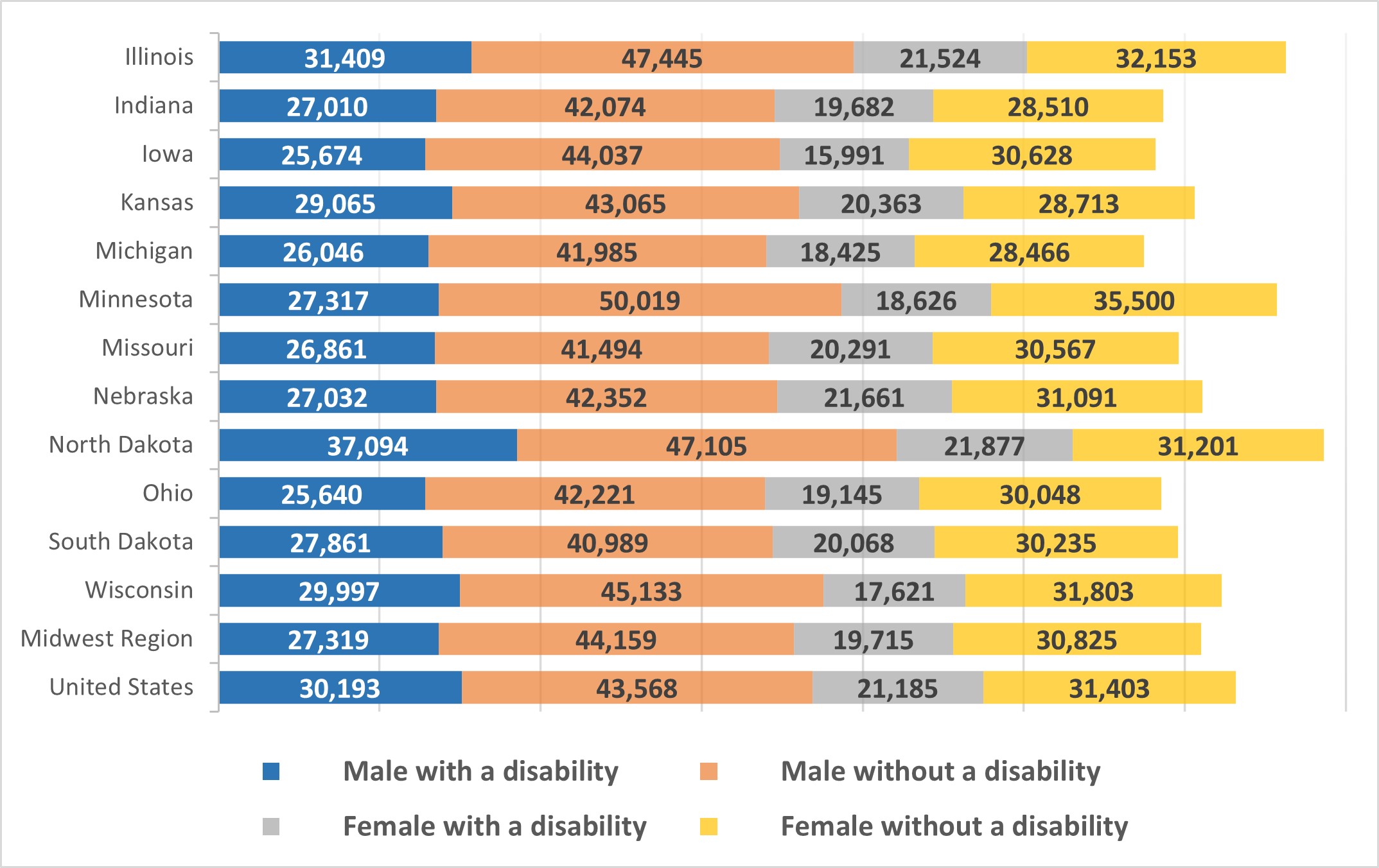
October 1st is the first day of the National Disability Employment Awareness Month (NDEAM) led by the U.S. Department of Labor’s Office of Disability Employment Policy.
It is a proper time to educate about disability employment issues and celebrate the substantial and valuable contributions of workers with disabilities in the U.S.
The 2021 NDEAM theme is America’s Recovery: Powered by Inclusion. This topic emphasizes the importance of making certain that people with disabilities have full access to employment and community involvement during the national recovery from the COVID-19 national pandemic.
Center for Disease Control and Prevention defines a disability as a condition of the body or mind (impairment) that makes it more difficult for the person with the condition to do certain activities (activity limitation) and interact with the world around them (participation restriction).[1] In the effort to capture the variety of disability characteristics, the U.S. Census Bureau identifies six aspects of disability: hearing, vision, cognition, ambulation, self-care, and independent living difficulties.[2]
Looking at the disability statistics in the Midwest as a region, all six categories show very similar values as the national numbers. The most common difficulties among the population with a disability are ambulatory difficulties (6.9% of the population in the U.S. and 6.8% of the Midwestern population), independent living difficulties (5.9% both), and cognitive difficulties (5.2% and 5.3%, respectively). A detailed picture of the North-Central Region (NCR) reveals that Missouri is the state with the highest share of people in all disability categories. Ambulatory (8.2%) and independent living (6.9%) difficulties are the most common in this state. North Dakota keeps a position on the opposite end, having the lowest share of ambulatory (5.4%), independent living (4.5%), cognitive (4.3%), and self-care (1.9%) difficulties in the NCR.
The share of males and females with disabilities is nearly the same in the U.S. (12.6% of males and 12.8% of females) and the Midwest (12.9%). However, half of the NCR states display lower shares of people with disabilities (Illinois, Iowa, Minnesota, Nebraska, North Dakota, and Ohio) (Figure 1).
Figure 1. Share of people with a disability by gender in the North-Central Region in 2019

Source: U.S. Census Bureau, 2019: ACS 1-Year Estimates Subject Tables
*Note: The Census Bureau will not release its standard 2020 ACS 1-year estimates because of the impacts of the COVID-19 pandemic on data collection. Experimental estimates, developed from 2020 ACS 1-year data, will be available on the ACS Experimental Data webpage no later than November 30th, 2021.
Regarding the employment status of the disabled people in 2019, employed people with disabilities accounted for 4.4% of the total population 16 to 64 years old in the NCR, and 4% in the U.S. Unemployed people with disabilities represented 0.5% of the total population 16 to 64 years old both in the NCR and the U.S. Finally, the share of people with disabilities that were not in the labor force reached 5.9% in the NCR and 5.8% the U.S. As shown in Figure 2, people with disabilities that did not participate in the labor force represented the largest group nationally, regionally, as well as on the state level, especially in Missouri (7.4%), and Michigan (7.2%) in case of the NCR.
Figure 2. Participation of disabled people in the labor force in the North-Central Region in 2019

Source: U.S. Census Bureau, 2019: ACS 1-Year Estimates Subject Tables
*Note: The Census Bureau will not release its standard 2020 ACS 1-year estimates because of the impacts of the COVID-19 pandemic on data collection. Experimental estimates, developed from 2020 ACS 1-year data, will be available on the ACS Experimental Data webpage no later than November 30th, 2021.
Workers with a disability tend to concentrate on certain jobs depending on their age and type of disability. Based on the U.S. Census Bureau, the most common occupation for people with a disability is janitors and building cleaners. It employs about 300,000 workers nationwide, representing 11% of workers in this occupation. Other large occupations for workers with disabilities are drivers, sales workers, truck drivers, cashiers, retail salespersons, laborers, and stock and material movers.[3]
U.S. Census Bureau also indicates that full-time workers with a disability earn as a group
87 cents for every dollar earned by people without a disability. Moreover, the median earnings for workers with a disability are very close to earnings for workers without a disability working similar jobs and schedules. Nevertheless, a closer look at the NCR and NCR state level reveals significant differences in median earnings between workers with and without disability
(Figure 3).
Figure 3. Median earnings (in $) for men with and without disability and women with and without disability in 2019

Source: U.S. Census Bureau, 2019: ACS 1-Year Estimates Subject Tables
*Note: The Census Bureau will not release its standard 2020 ACS 1-year estimates because of the impacts of the COVID-19 pandemic on data collection. Experimental estimates, developed from 2020 ACS 1-year data, will be available on the ACS Experimental Data webpage no later than November 30th, 2021.
Median earnings between workers with and without disability in Midwest in 2019 differed more than on the national level. On average, disabled workers in the Midwest earned by 5% less than the national number (37% versus 32%). In Illinois, Missouri, and Ohio, a median earnings difference between women workers with and without disability reached 45% to the detriment of disabled working women in Illinois and 48% in the other two states. The best situation for disabled women was in North Dakota, where they earned 29% less than working women with no disability. Men with disabilities earned from 21% less in Kansas to 45% less in Missouri compared to men without a disability.
[1] Center for Disease Control and Prevention: https://www.cdc.gov/ncbddd/disabilityandhealth/disability.html
[2] U.S. Census Bureau: https://www.census.gov/quickfacts/fact/note/US/DIS010219
[3] U.S. Census Bureau: https://www.census.gov/library/stories/2019/03/do-people-with-disabilities-earn-equal-pay.html
Author: Zuzana Bednarikova, zbednari@purdue.edu
Dr. Zuzana Bednarikova is a Research and Extension Specialist at NCRCRD.
